Some foods are delicious and some are nutritious. Many are both, and it’s these that we’re going to take a look at today. For your survival garden, there are some foods that should be a priority due to their nutritional value and the amount of space that you need to grow them in, so let’s get started!
Sweet Potatoes
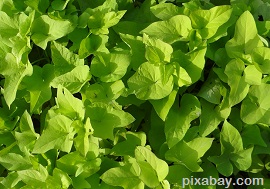 They are the most nutrient-dense food that you can grow in the smallest space, they’re packed with vitamin A2, vitamin C, manganese, copper, pantothenic acid, vitamin B6, biotin, potassium, fiber, vitamin B3, vitamin B1, vitamin B2 and phosphorus.
They are the most nutrient-dense food that you can grow in the smallest space, they’re packed with vitamin A2, vitamin C, manganese, copper, pantothenic acid, vitamin B6, biotin, potassium, fiber, vitamin B3, vitamin B1, vitamin B2 and phosphorus.
There’s also 114 calories in a cup of cubed sweet potatoes. On top of that, they’re delicious and can be cooked a number of different ways so that you don’t run the risk of food fatigue. Sweet potatoes store well in a cellar as long as you don’t wash them before storing them. They can last all winter.
Corn
 Though this food isn’t packed with many nutrients, it does have quite a few calories and a number of other benefits. It’s a fiber-rich food that will help keep your digestive tract healthy. The fiber also helps slow down the burning of calories so that you stay fuller longer and have sustained energy.
Though this food isn’t packed with many nutrients, it does have quite a few calories and a number of other benefits. It’s a fiber-rich food that will help keep your digestive tract healthy. The fiber also helps slow down the burning of calories so that you stay fuller longer and have sustained energy.
Corn also high in carotenoids, or antioxidants that help keep free radicals from causing disease. Finally, corn can be dried and ground into corn meal or corn flour that can be used to make everything from johnny cakes to corn bread and polenta. It’s a great addition to your survival garden.
Dry beans
 Dry beans are packed with fiber, protein and many other nutrients that make them a near perfect food. As a matter of fact, beans and rice actually provide you with a perfect combination of protein and carbohydrates. For example, in 1 cup of pinto beans, you get 206 calories, 2 grams of fat and almost 12 grams of protein. You can yield about 3-5 pounds of beans from 100 square feet of garden and they have a fairly short maturation time.
Dry beans are packed with fiber, protein and many other nutrients that make them a near perfect food. As a matter of fact, beans and rice actually provide you with a perfect combination of protein and carbohydrates. For example, in 1 cup of pinto beans, you get 206 calories, 2 grams of fat and almost 12 grams of protein. You can yield about 3-5 pounds of beans from 100 square feet of garden and they have a fairly short maturation time.
Some examples of beans include lentils, pintos, navy beans, peas, favas, soybeans and garbonzo beans. When dried, they store for several years as seeds and up to 2 years as a food source. Because some beans grow better in some locations than others, you’ll need to research what grows best in your area.
Winter squash
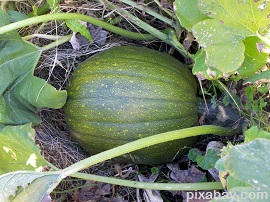 There are several different varieties of winter squash but they’re all packed with vitamins A and C. They’re also calorie-dense and full of healthy fiber that will help you stay full longer and utilize the high amount of carbohydrates found in many varieties. You can get 50-90 pounds of squash from 100 square feet of garden space.
There are several different varieties of winter squash but they’re all packed with vitamins A and C. They’re also calorie-dense and full of healthy fiber that will help you stay full longer and utilize the high amount of carbohydrates found in many varieties. You can get 50-90 pounds of squash from 100 square feet of garden space.
To store squash, you can can them or you can store them as-is in a shed or cellar just like you do potatoes. Check them every couple of weeks and discard ones that are starting to go bad.
Kale and collard greens
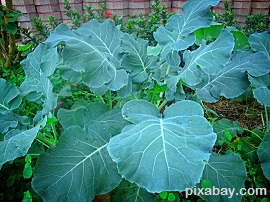 These are perpetuating crops, which means that you can pick them and they just keep growing. You can grow them indoors and in some climates, they’ll grow year-round outside because they’re extremely hardy even in cold weather.
These are perpetuating crops, which means that you can pick them and they just keep growing. You can grow them indoors and in some climates, they’ll grow year-round outside because they’re extremely hardy even in cold weather.
Kale and collard greens are packed with nutrients, the highest of which is calcium; one cup of cooked collard greens provides the same amount of calcium as a glass of milk. They’re also rich in vitamins A, C and K and have several different minerals in them that your body needs to survive.
Since both kale and collard greens are easy to can, you can store them almost indefinitely if you find yourself with too much raw greens to eat. They aren’t very high in calories though so pair them with potatoes, beans or other calorie-dense foods for a well-rounded meal that will stick to your ribs.
Cabbage
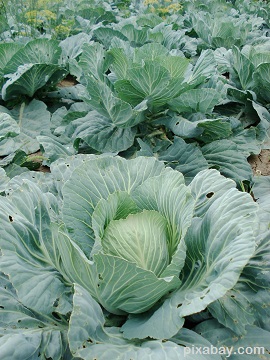 You can grow numerous heads of cabbage in a very small space and it stores well on the stock even in cold weather. You can then store it in a root cellar over the winter or ferment it into sauerkraut, which is extremely nutrient dense and provides probiotics that will help keep your gut healthy, too. Properly made sauerkraut will store in its crock for months.
You can grow numerous heads of cabbage in a very small space and it stores well on the stock even in cold weather. You can then store it in a root cellar over the winter or ferment it into sauerkraut, which is extremely nutrient dense and provides probiotics that will help keep your gut healthy, too. Properly made sauerkraut will store in its crock for months.
Cabbage is an excellent source of vitamins B6, C and K and also contains several minerals including manganese, folate and copper. It’s also a good source of potassium, vitamin B1 and dietary fiber. Since it can be cooked in a variety of ways with many different foods, it’s a good all-around survival food.
Spinach
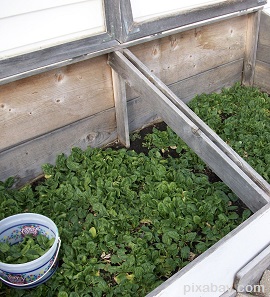 Popeye had it right when he ate this superfood as his staple for strength and health. It’s packed with vitamins A, C, E and K, vitamin B2 and B6 iron, lutein, magnesium, folate, manganese, betaine, calcium, potassium, zinc, folic acid, copper, protein, selenium, phosphorus, niacin and omega-3 fatty acids.
Popeye had it right when he ate this superfood as his staple for strength and health. It’s packed with vitamins A, C, E and K, vitamin B2 and B6 iron, lutein, magnesium, folate, manganese, betaine, calcium, potassium, zinc, folic acid, copper, protein, selenium, phosphorus, niacin and omega-3 fatty acids.
Just that list alone is impressive but when you add in the facts that it grows in very little space, can be picked over and over again, and stores well when canned, it’s an absolute must-have for your survival garden.
Spinach can be served fresh or can be sautéed down with a bit of olive oil (or bacon grease if you really want it to taste delicious). Toss in a bit of garlic and you’ve got a delicious side dish. You can also add it to just about any soup, stew, omelet, or sauce to add a bit of nutrition to all of your dishes without the kids even knowing it’s there.
Tomatoes
 These beautiful red wonders are a great source of vitamins A, C and K as well as lycopene, which is great for your eyes and helps your body to fight cancer. Since they can be cooked in many different ways or eaten raw, you’ll never run out of ways to cook them. They can well and can be stored canned for several years without going bad.
These beautiful red wonders are a great source of vitamins A, C and K as well as lycopene, which is great for your eyes and helps your body to fight cancer. Since they can be cooked in many different ways or eaten raw, you’ll never run out of ways to cook them. They can well and can be stored canned for several years without going bad.
Tomatoes grow prolifically on vines that thrive even in vertical gardens so there’s no reason why you wouldn’t make them a part of your survival garden!
Garlic
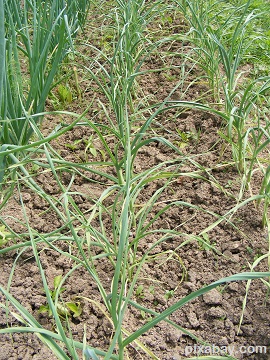 Aww, that deliciously pungent, nutritious little bulb of delight. It’s used in nearly all ethnicities and adds a great flavor to many different dishes. You can also can it so that it stays good indefinitely. You can grow enough for an entire year in just about 10 square feet of space and it’s extremely hardy.
Aww, that deliciously pungent, nutritious little bulb of delight. It’s used in nearly all ethnicities and adds a great flavor to many different dishes. You can also can it so that it stays good indefinitely. You can grow enough for an entire year in just about 10 square feet of space and it’s extremely hardy.
It’s an excellent source of B6 and manganese and is a good source of vitamin C, vitamin B1, calcium, phosphorus and selenium. Since it’s so versatile, it definitely makes our list of must-haves in your survival garden.
Other foods that deserve mention include broccoli, asparagus, onions and Brussels sprouts. Depending on your garden space and your storage area, you should make an effort to grow enough each year to get you through 2 years just in case disaster does strike. If you don’t have that much space, do what you can with what you have to work with.
We have some great articles on vertical gardening for those of you who don’t have much space. There’s really no reason why you can’t grow at least some of your own food regardless of where you live.
If you can think of anything that we left out or have anything else to add, please feel free to do so in the comments section below.
This article has been written by Theresa Crouse for Survivopedia.




























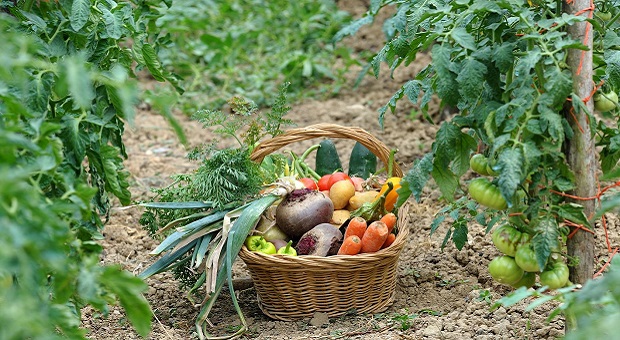








































Just wanted to reinforce your advice on going vertical. It is indeed a game changer for the better. It is light years in abundance ahead of normal gardening. thanks for all you do to keep us fat out here. (lol) Seriously, thanks
It’s useful to note that sweet potato greens are edible and highly nutritious. Also, a great alternative to spinach that will produce much more food in the same space, grow faster, provide “grain” and a strong stalk that beans can climb, is amaranth.
Very good info. Your post are right on. Keep it coming.
Enjoy the reading. Keep up the good work. Look forward to reading more articles from you.